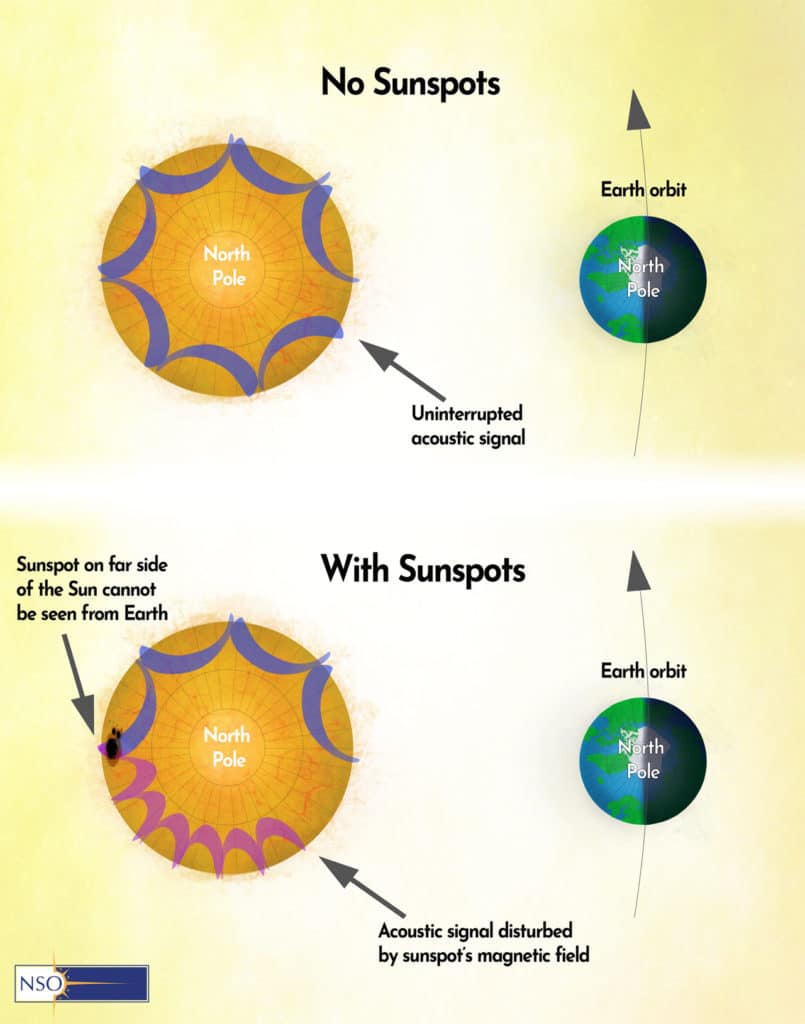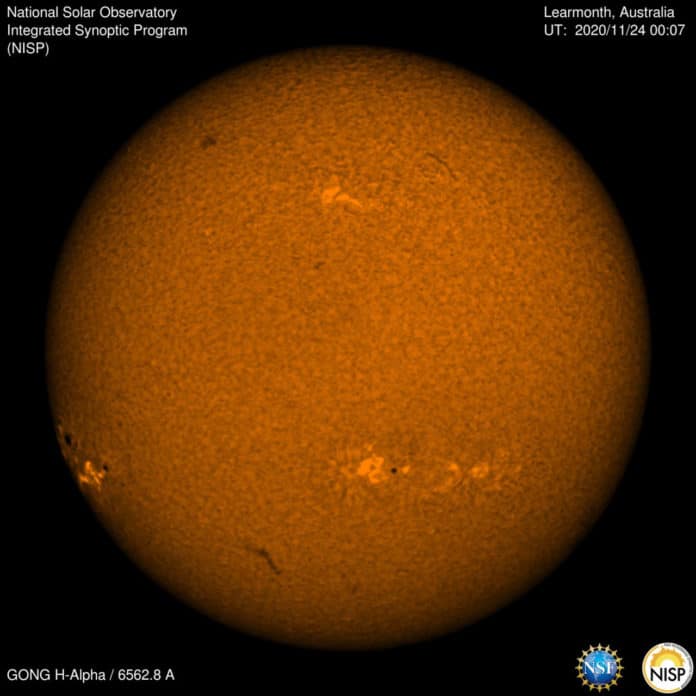On November 18, scientists from the US National Science Foundation’s (NSF’s) National Solar Observatory (NSO) anticipated the appearance of a large sunspot just in time for Thanksgiving. Scientists used a technique called helioseismology to measure the change in acoustic signals on the far side of the Sun.
Scientists listened to the changing sound waves from the Sun’s interior, which predicted the arrival of a large sunspot.
Dr. Alexei Pevtsov, Associate Director for NSO’s Integrated Synoptic Program, said, “The technique we used can identify what is happening on the side of the Sun that faces away from Earth days before we can catch a glimpse from here. Having up to five days lead time on the presence of active sunspots is extremely valuable to our technology-heavy society.”
NSO provides 24/7 “eyes on the Sun” through the Global Oscillation Network Group (GONG) network. The network consists of six monitoring stations positioned across the globe, observing the Sun’s magnetic field and other features all day, every day.

Dr. Carrie Black, Program Director at NSF, said, “The ability of GONG to identify and track active regions emergent on the far side of the Sun has important implications for future space weather predictive capabilities. GONG continues to be a valuable tool for both fundamental scientific research and operations.”
Dr. Kiran Jain, the scientist who is leading the far side prediction at NSO, describes the evolution of the sunspot as “the strongest far-side signal we have had this solar cycle.
She further added, “We first noticed the signal in our far-side images on November 14, 2020. It was inconspicuous at first but grew quickly, breaking detection thresholds just one day later. Since we are in the very early phase of the new solar cycle, the signal from this large spot stands out clearly.”
Dr. Valentin Martinez Pillet, Director of the National Solar Observatory, said, “The GONG network is providing an essential service to the United States space weather preparedness. But it is close to three decades old and needs an upgrade. The original system was not created with space weather in mind, so we are exploring options for the Next Generation GONG network, with modern instrumentation especially attuned with space weather as a priority.”
“The GONG measurements suggest the new sunspot has been growing since its first detection on the far side of the Sun late last week and is now finally visible from Earth where it will continue to be monitored by the GONG network and other solar observing assets. The sunspot will likely be visible using binoculars or small telescopes with appropriate solar filters* later this week as it passes across the face of the Sun.”
